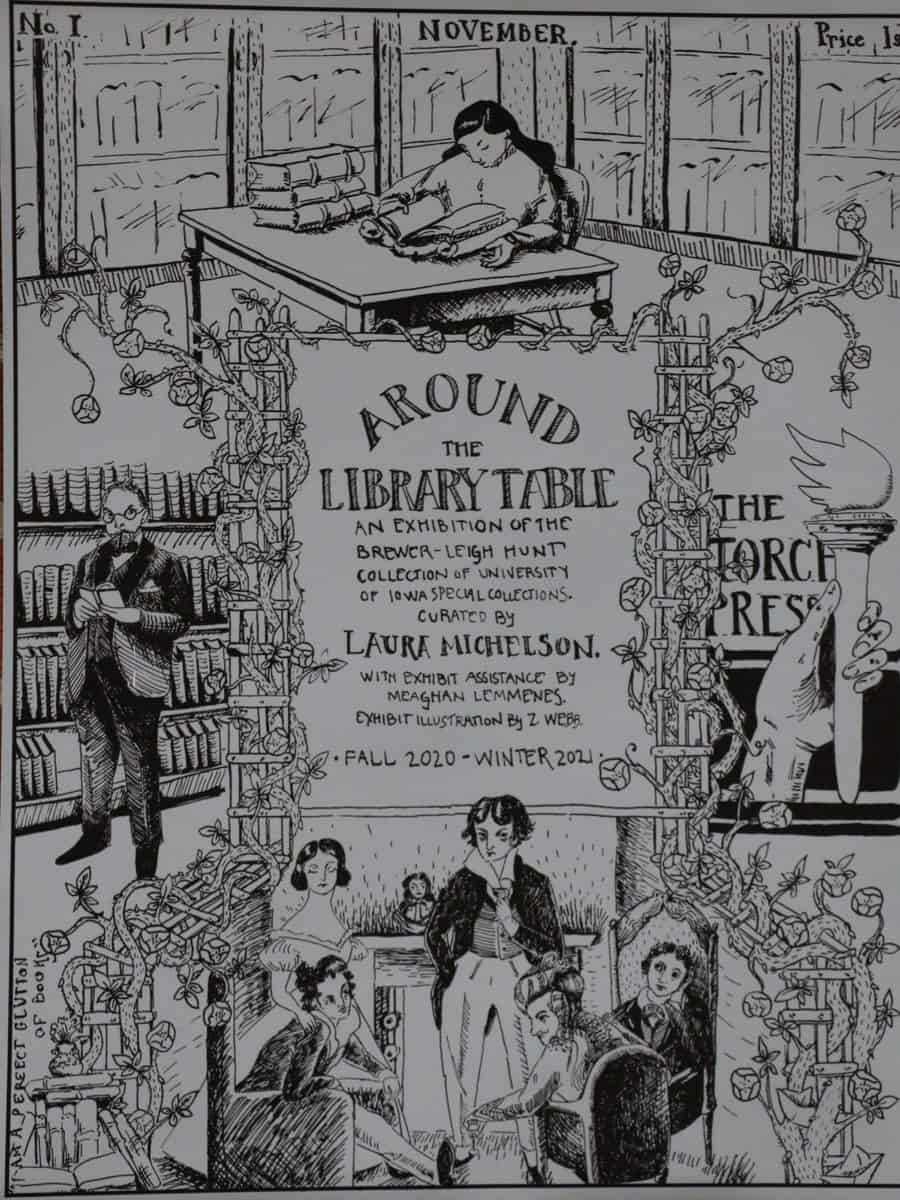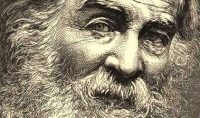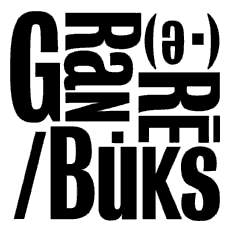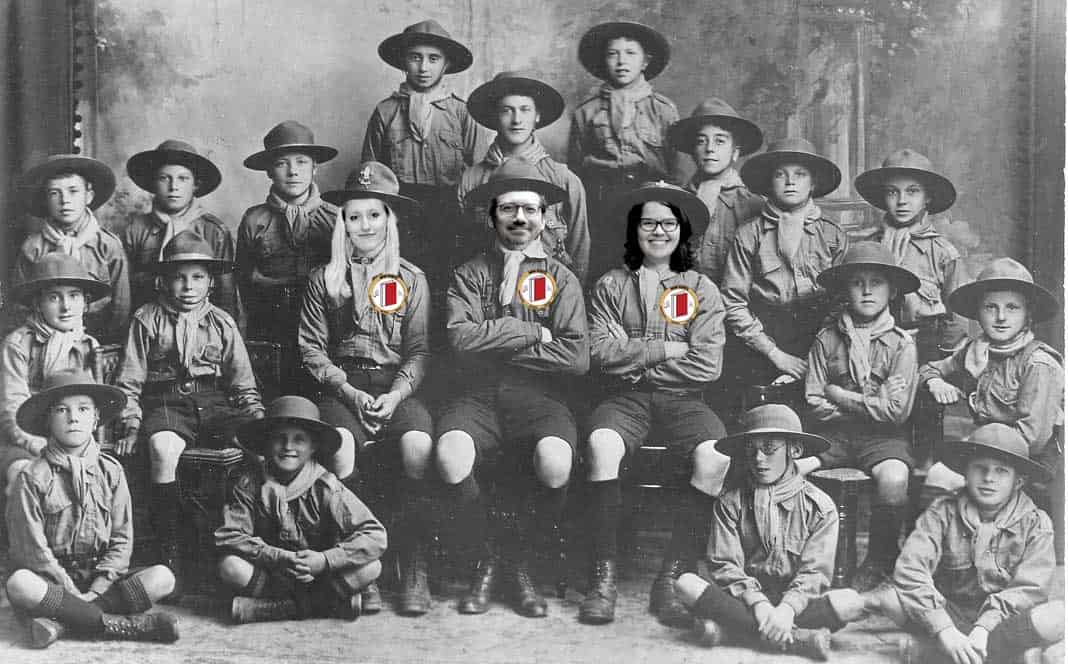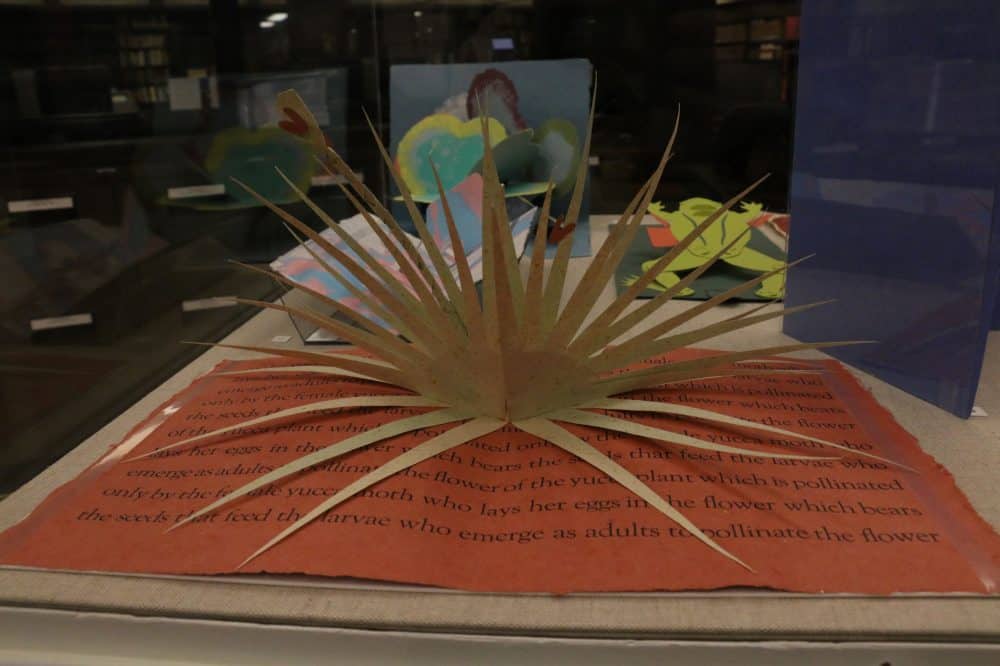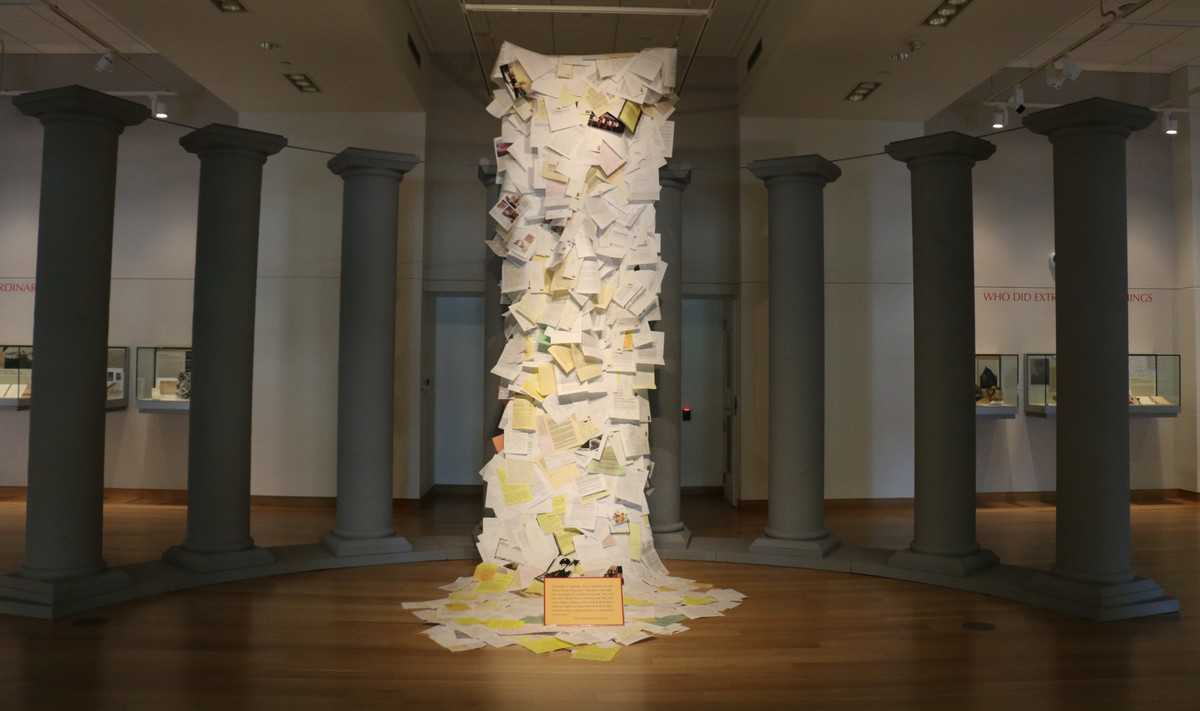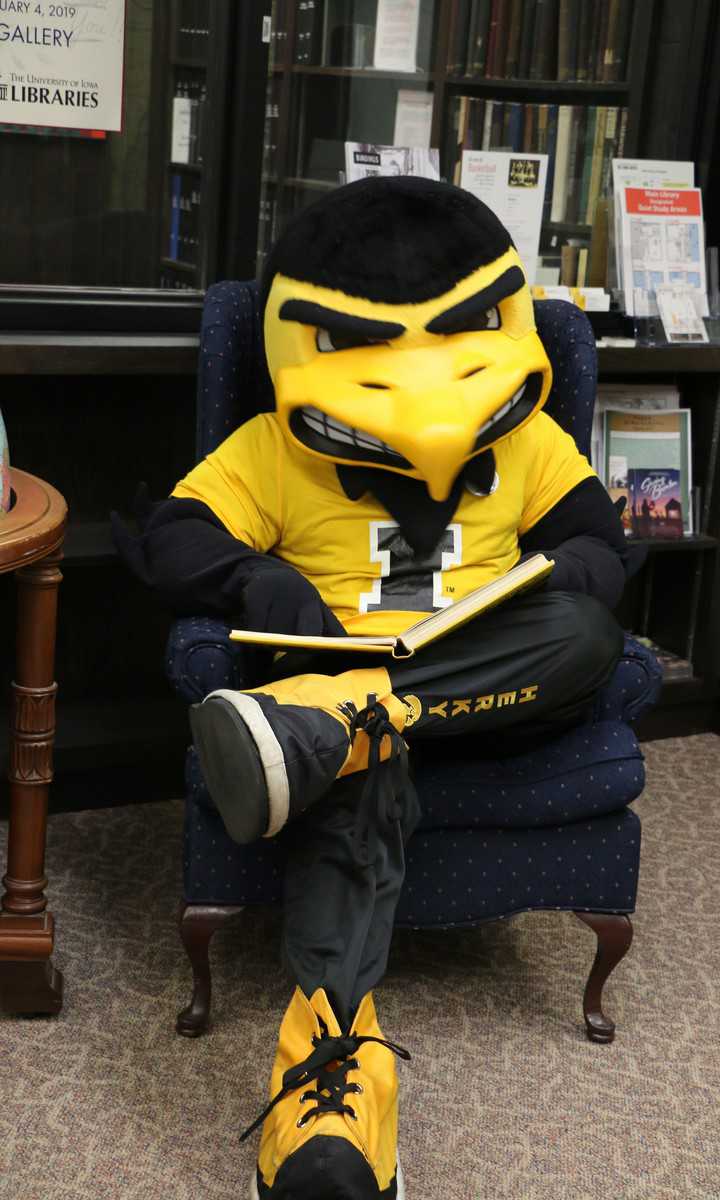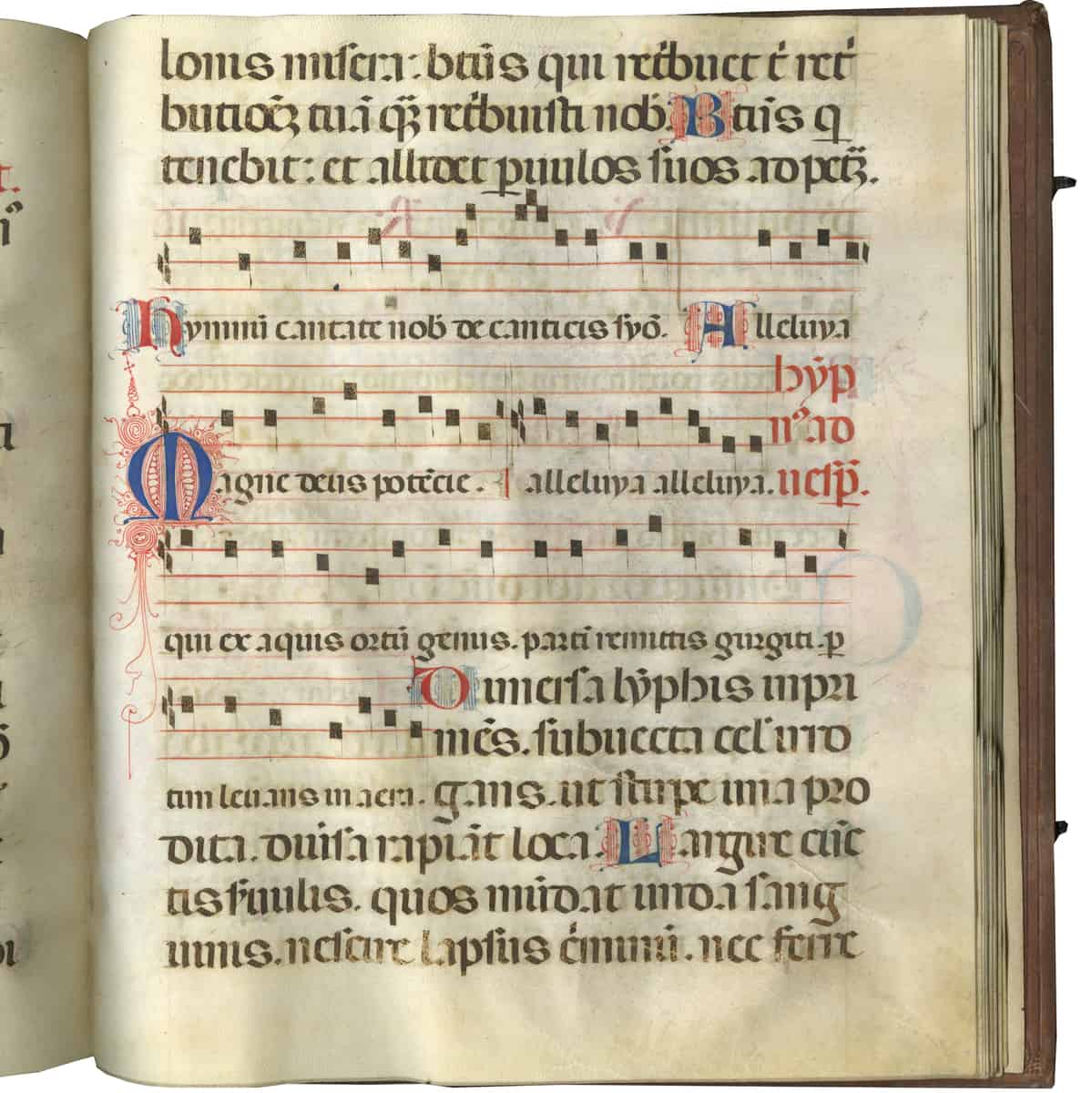Join us as we sit down and discuss around the library table. We will light a fire in the fireplace and share stories from our favorite collection. Grab your favorite piece of classic literature or bring a new story you are writing as we share with you all the life of an English Romantic andContinue reading “Sitting Around the Library Table with Laura Michelson”
Author Archives: Meaghan Lemmenes
Exhibit to Celebrate Walt Whitman’s 200th Birthday
Hailed as “America’s poet” by poet Ezra Pound and others, Walt Whitman is a familiar name to most Americans, even if they haven’t read his most famous work Leaves of Grass. Even 200 years after his birth, Whitman finds himself the center of countless research questions and an inspiration for modern writers. For someone whoContinue reading “Exhibit to Celebrate Walt Whitman’s 200th Birthday”
An Exhibit for the Senses
The great thing about artists books is that it shows us the various shapes, sizes, and textures that books can come in. Publishing companies, who also vary in shapes and sizes, help get these books out into the world for everyone to enjoy. Curated by University of Iowa Professor Jennifer Buckley, Seeing Seeking Feeling Reading:Continue reading “An Exhibit for the Senses”
Earn your own bookbinding badge with this new exhibit
Do you have an interest in bookbinding? Have you always wanted to be a boy or girl scout but never took the opportunity to join? Or maybe you miss those scouting days? Well, now is your chance to earn your Bookbinding badge and join the Book Scouts. Curated by Olson Graduate Assistant Laura Michelson, graduateContinue reading “Earn your own bookbinding badge with this new exhibit”
Top 10 Things Found from Student Shelver
I was hired at Special Collections to shelve things. Books, boxes and everything in-between. As time went on, I began putting away newly acquired books as well as gathering the material for classroom use. There are so many books and material passing through my hands each shift I complete, and each book or item isContinue reading “Top 10 Things Found from Student Shelver”
Hand Papermaking is on exhibit in the Reading Room
This week we said goodbye to our Herky exhibit and said hello to the beauty of papermaking. Giselle Simón, Head Conservator at University of Iowa, was invited to curate an exhibit called Hand Papermaking Portfolios: Selections from 1994-2017 in honor of the Dard Hunter and the American Printing History Association joint conference, which will be held here,Continue reading “Hand Papermaking is on exhibit in the Reading Room”
From University Archivist David McCartney: Top 10 historical things at the UI
In honor of Homecoming week here at the University of Iowa, we asked our University Archivist David McCartney to pick the top ten favorite historical things here at the University. The items are in no particular order. 10. The Birthplace of Prime-time TV. Sure, Westinghouse, General Electric, AT&T and other labs were testing television inContinue reading “From University Archivist David McCartney: Top 10 historical things at the UI”
New Exhibit Tells Stories Worth Telling
Throughout the history of journalism, there have been different mediums in which writers tell their stories. Print, TV and radio have all dominated the journalistic world at one point in time, and while there are many forms to share information, Special Collections explores Tom Brokaw’s stories from the greatest generation through an exhibit, Stories WorthContinue reading “New Exhibit Tells Stories Worth Telling”
Herky’s Birthday Celebration
Thank you to everyone who came out and celebrated with us!
Manuscripts in the Curriculum comes to Special Collections
With the new school year beginning, Special Collections has brought in 21 new manuscripts for the fall semester for professors, students, and enthusiasts to enjoy and learn from. These manuscripts are on loan from Les Enluminures, a company with locations in Paris, New York and Chicago. Les Enluminures was created to offer a large andContinue reading “Manuscripts in the Curriculum comes to Special Collections”
